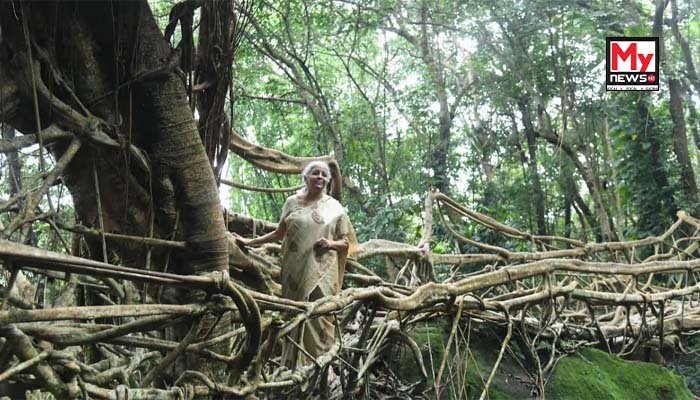Sitharaman Backs Meghalaya’s Living Root Bridges for UNESCO Heritage Tag
Shillong, Meghalaya: Union Finance Minister Nirmala Sitharaman has thrown her weight behind Meghalaya’s iconic living root bridges, currently awaiting UNESCO World Heritage status. During her visit to the East Khasi Hills district on July 12, the minister expressed strong support for the ongoing efforts to secure the coveted tag, highlighting the global recognition it would bring to traditional knowledge and sustainable practices.
Sitharaman lauded the renewed grassroots momentum aimed at reviving the nomination and strengthening the proposal through active community engagement and forging international partnerships. She underscored that such global acknowledgment would not merely honour centuries-old traditional wisdom but also serve as an inspiration for others to embrace sustainable practices deeply rooted in local understanding. “Recognition is not for showing off, but for showing the world that you did it first,” she remarked during her visit to the living root bridge in Siej village on Saturday. She further added, “Your practices are not only effective they are replicable.”
These awe-inspiring, bioengineered structures, meticulously handcrafted over generations by the indigenous Khasi and Jaintia communities, stand as a testament to the rare harmony achieved between nature and human ingenuity. Primarily found on the southern slopes of Meghalaya, bordering Bangladesh, these bridges represent a unique blend of ecological wisdom and architectural brilliance. Meghalaya first submitted a proposal to UNESCO in 2018, seeking inclusion of the living root bridges in the World Heritage list under the “cultural landscapes” category. The initial nomination, backed by the state government and conservation experts, spotlighted the ecological, cultural, and architectural significance of these living structures. However, the process encountered delays due to procedural requirements, a need for more comprehensive documentation, and the crucial requirement for greater community-led participation in the heritage mapping process.
On Saturday, the Union Finance Minister also engaged in meaningful interactions with village elders, local leaders, and beneficiaries of the Payment for Ecosystem Services (PES) programme. This initiative, supported by the World Bank, KFW, and ADB, focuses on understanding how traditional ecological knowledge is being preserved and innovated by indigenous communities. Her itinerary also included a visit to Sohbar, a border village in the East Khasi Hills district, making her the first Union minister to visit the remote area. Sitharaman emphasised the strategic importance of such villages, stating, “Border villages like Sohbar are not the end of India, but it is the beginning.” Sohbar is one of 92 villages in Meghalaya selected under the second phase of the Vibrant Villages Programme (VVP).
The Union Finance Minister outlined key development focus areas for Sohbar, including robust road infrastructure, enhanced telecom and digital connectivity, widespread television coverage, and improved electricity access. She further assured residents that within a 5-kilometre radius, they would have access to banking facilities, ATMs, or other financial institutions, fostering inclusive growth and rural entrepreneurship. The Finance Minister is scheduled to conclude her four-day visit to Meghalaya with a stop at the Ramakrishna Mission Ashram School in Sohra on Sunday. The Ramakrishna Mission has played a pivotal role in education, healthcare, and rural upliftment in Sohra and its adjoining regions for decades, empowering generations of youth in the Khasi Hills through its schools, vocational training, and community outreach programmes, with a strong emphasis on value-based education, self-reliance, and social service.

